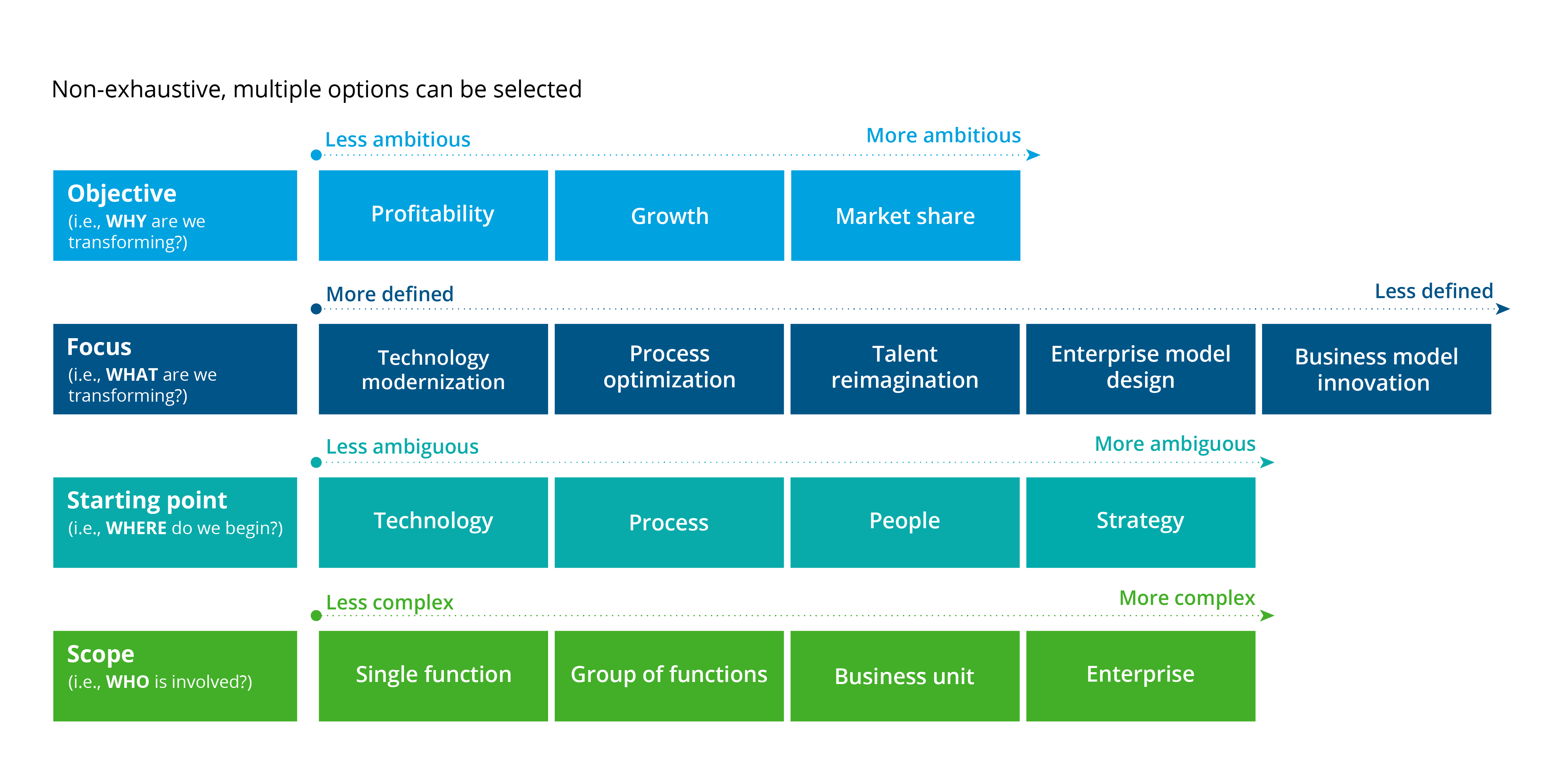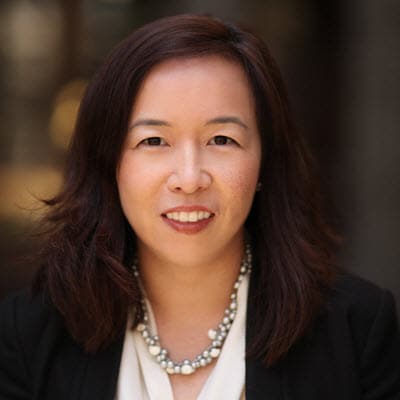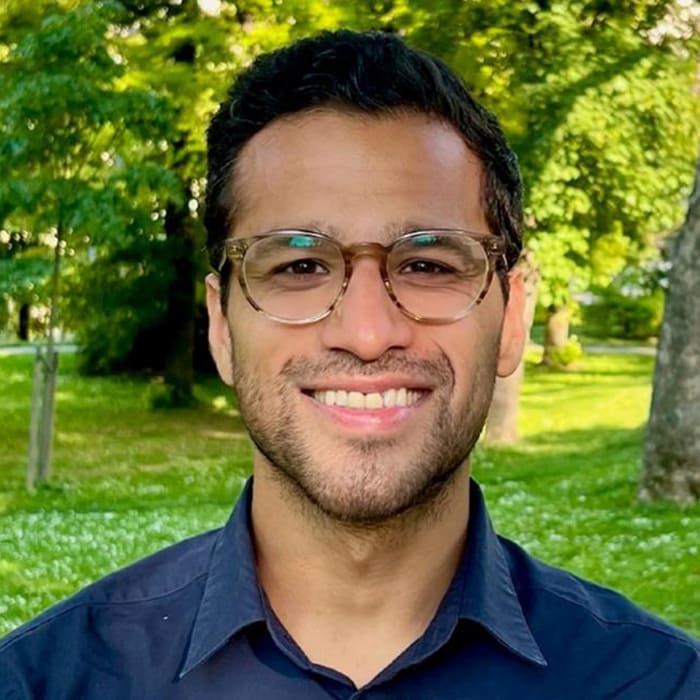Structuring your transformation program the right way
How to drive successful transformation as CTrO

Chief transformation officers (CTrOs) hold the keys to unlocking an organization's potential through successful enterprisewide transformation. But how can they get transformation right? This article, part of Monitor Deloitte’s CTrO eminence series, outlines how to optimally structure and drive a program using a transformation nerve center (TNC).
Key considerations when starting your TNC
The remit and role of the TNC varies widely based on the objective, focus, starting point, and scope of the transformation program. In our experience shaping transformation programs for clients across industries, we find that leaders need to ask four key questions (see exhibit 1) to effectively characterize their transformation:
- Why are we transforming? This is your organization’s transformation objective (or “North Star”), such as accelerating growth or improving profitability. More ambitious objectives—such as capturing meaningful market share—typically signal the need for a more involved and visionary transformation program.
- What are we transforming? This outlines your transformation’s focus or domains, such as process optimization or business model innovation. We observe that the more defined the focus area—such as technology modernization—the more targeted the transformation program scope and approach must be.
- Where do we begin? Transformations evolve—they are “waypoints,” not endpoints. For example, one global technology company we supported focused initially on technology as the sole anchor for their transformation, which later evolved into a broader, enterprise-wide strategic transformation. Where you start (and the ambiguity that comes with it) influences how you stand up and staff the transformation program of today.
- Who is involved? Finally, the scope and scale of the transformation indicates the degree of complexity of the program. Not surprisingly, the more functions involved in a transformation, the more the overall program must be able to manage cross-functional complexity and risks.
Figure 1: Program dimensions

The unique dimensions of your transformation have a direct impact on the program approach—specifically, which functions are involved, which stakeholders are engaged, what the nature of initiatives is, and how success is measured.
Once you’ve aligned on the unique dimensions of your transformation program and clarified the approach, the next step is to identify the role and scope of the TNC required to bring that transformation program to life.
The roles of your TNC in your transformation program
TNCs are critical for the successful execution of any transformation program.1 They serve as the central control towers for the transformation. Furthermore, it’s not simply the presence of a TNC but, in fact, the nature of the TNC—its role and remit—that increases the probability of transformation success. In our experience, there are two role archetypes that leading TNCs fall into: orchestrator and architect (figure 2).
Figure 2: TNC archetypes

The two major TNC archetypes—orchestrator and architect—are parts of a spectrum, with organizations often choosing to adopt a hybrid approach that handpicks elements from each of the archetypes. Moreover, we often see that CTrOs initially set up their TNCs as orchestrators but soon realize that they need them to be architects.
The TNC, sometimes referred to as a transformation management office, is a dedicated group charged with comprehensively managing the inherent, mission-critical complexities of a transformation program, with a scope substantially larger than a traditional project management office.
Learn more about Deloitte’s perspectives on TNC here.
Your TNC: A reflection of transformation potential
The role and size of the TNC reflects your organization’s willingness and capacity to change. Rightsizing the TNC is another critical step in ensuring the success of your program. Oversized and overextended TNCs that micromanage workstreams/initiatives can lead to operational inefficiencies and change management complexity. Conversely, undersized TNCs with limited access or insight across the breadth of the program can lead to mismanaged outcomes and a lack of accountability.
In our experience, CTrOs can design their TNC role and size based on two key questions:
- What is your organization’s willingness to change? The desire—and willingness—of the entire organization to commit to an exponential shift is a critical determinant of what the TNC needs to be. Even if the urgency to transform is high (e.g., significant activist pressure), internal resistance from the organization can reduce the probability of a successful transformation program. In scenarios where resistance to change is high, TNCs need to spend a lot more time on mobilization of workstreams, communication of priorities and activities, and change management.
- What is your organization’s capacity to change? This question enables the CTrO to assess the effectiveness of underlying capabilities that an organization has to execute a transformation program. Typically, a clearer transformation vision, culture of rapid decision-making, and prior experience undergoing large-scale strategic shifts indicate a high capacity to change and the need for a lower-touch TNC.
Three key steps to help CTrOs get started
Ultimately, one of the first—and arguably the hardest—decisions a CTrO needs to make is how to establish a strong foundation to drive transformation. To get started, we recommend CTrOs take three key steps:
- Clearly define and communicate your transformation program dimensions.
- Determine the right approach, thinking through workstreams, in-scope functions, and success measures that align to your transformation’s unique characteristics.
- Design your TNC to align not only with the transformation program characteristics but to your organization’s capacity to change.
With the optimal transformation program structure and TNC in place, CTrOs will be well equipped to kick-start their transformation journeys. In our upcoming articles, we’ll continue to explore how CTrOs can take the critical next steps to identify, prioritize, activate, and learn from the core elements of their transformation programs.
1. Maximilian Schroeck, Anne Kwan, and Cristina Stefanita, “What it takes to execute large-scale and lasting transformations,” Deloitte Insights, November 23, 2020.
Get in touch

Anne Kwan
Sponsor, Deloitte’s Chief Transformation Officer Program
Monitor Deloitte

Vansh Muttreja
Senior Manager, Transformation Program Strategy & Design
Monitor Deloitte